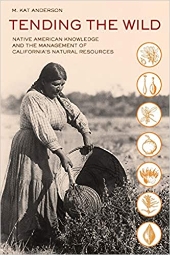
 2
2




 2
2




Gilbert Fritz wrote:
So, if we set aside half the earth, what happens to the native peoples, and, even more, what happens to the land they cared for?
Idle dreamer














It's pretty clear that human society has left an indelible impression on the natural environment around us, with our impact on the planet even qualifying as a new geological epoch – but surely if you travelled far enough in search of an untouched, pure oasis, you could still find a natural sanctuary on Earth unsullied by the hands of humankind?
Nope. At least, not according to a new study, which trawled through decades of archaeological data and found that there are no remaining pristine places on Earth that are unaffected by human society and activity, and there probably hasn't been one for thousands of years.
 1
1








 It will need some thought .
It will need some thought . Living in Anjou , France,
For the many not for the few
http://www.permies.com/t/80/31583/projects/Permie-Pennies-France#330873
 1
1




Rufus Laggren wrote:
I think real estate is more likely to be maintained "healthy" when there are "owners" on site who value it. That is also one of humanity's historic traits - get bonded to the land. Not as flashy or maybe as strong as the simple greed impulse but able to draw in larger numbers of people and thus (potentially) make for some real strength. It's also a more direct and easier project - stay at home and fix it. That's kinda pie-in-sky, too, but at least we're all in place (wherever) to get started any time we fee like it; no moving around.
But I guess "stay at home and fix stuff" doesn't have much romantic appeal. <g>
Rufus
 2
2





 1
1




Archaeologists in Cambodia have found multiple, previously undocumented medieval cities not far from the ancient temple city of Angkor Wat, the Guardian can reveal, in groundbreaking discoveries that promise to upend key assumptions about south-east Asia’s history.
The Australian archaeologist Dr Damian Evans, whose findings will be published in the Journal of Archaeological Science on Monday, will announce that cutting-edge airborne laser scanning technology has revealed multiple cities between 900 and 1,400 years old beneath the tropical forest floor, some of which rival the size of Cambodia’s capital, Phnom Penh.
Some experts believe that the recently analysed data – captured in 2015 during the most extensive airborne study ever undertaken by an archaeological project, covering 734 sq miles (1,901 sq km) – shows that the colossal, densely populated cities would have constituted the largest empire on earth at the time of its peak in the 12th century.
Evans said: “We have entire cities discovered beneath the forest that no one knew were there – at Preah Khan of Kompong Svay and, it turns out, we uncovered only a part of Mahendraparvata on Phnom Kulen [in the 2012 survey] … this time we got the whole deal and it’s big, the size of Phnom Penh big.”





We are the influencer of influencers, the keystone species that disproportionately affects other keystone species, the ur-stone that dictates the fate of every arch.
Bears, wolves, salmon, starfish, orcas, and sea otters: we influence the lot. Whether directly through hunting and fishing, or indirectly through light and noise pollution, climate change, or deforestation, we change the levels of keystone species everywhere.
“People now strongly influence all natural ecosystems,” says Julia Baum from the University of Victoria. “We do so to such an extent that as scientists we cannot even begin to understand how the ecosystems work if we do not first account for the ways in which people are changing them.”




Idle dreamer

 1
1




Change the organisms that live in soil and you can change the kinds of plants that grow in it.
A field trial in the Netherlands has found that adding a thin layer of soil from a healthy ecosystem to degraded land greatly speeds up restoration. What’s really surprising, though, is that this “inoculation” can determine in what direction the ecosystem develops.

|
I think he's gonna try to grab my monkey. Do we have a monkey outfit for this tiny ad?
The new kickstarter is now live!
https://www.kickstarter.com/projects/paulwheaton/garden-cards
|





